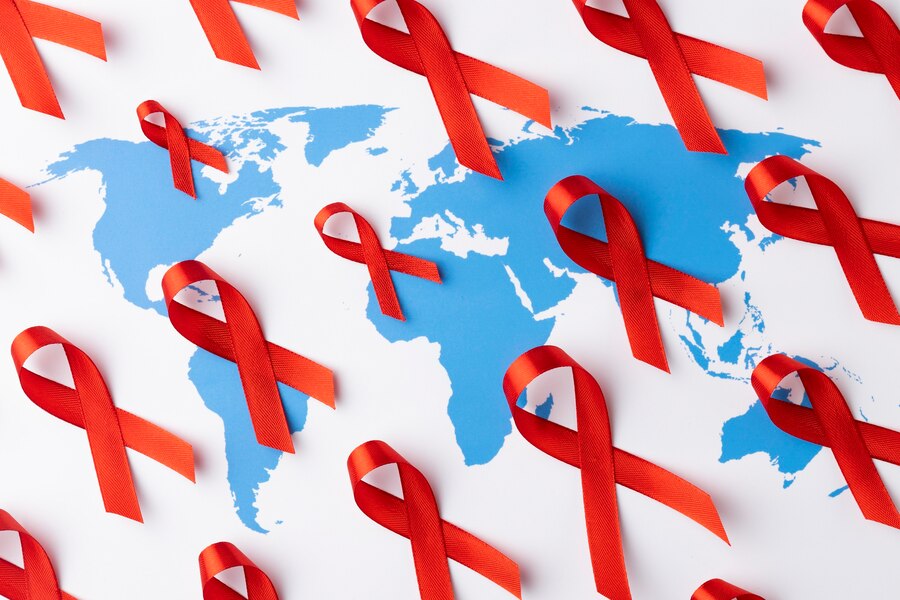Hiv/aids - an infection that causes damage to the body's immune system
Human Immunodeficiency Virus (HIV) is an infection that affects the body's immune system. The most advanced stage of HIV infection is acquired immunodeficiency syndrome (AIDS). HIV affects the white cells in the blood, which leads to a weakened immune system. This increases the likelihood of developing diseases such as tuberculosis, infectious diseases, and some types of cancer. WHO currently defines severe immunodeficiency as a disorder in which the CD4 cell count falls below 200 cells/mm3 or as the third or fourth clinical stage of HIV infection in adults and adolescents according to the WHO classification. It is generally accepted that all children with HIV under 5 years of age have severe immunodeficiency.
HIV symptoms vary depending on the stage of infection.
Some people may have no symptoms for the first few weeks after infection. Others may have a flu-like illness with symptoms such as:
fever;
headache;
rash;
sore throat.
The infection gradually weakens the immune system. This can lead to other signs and symptoms:
enlarged lymph nodes;
weight loss;
fever;
diarrhea;
cough.
In the absence of treatment, people with HIV infection can also develop serious diseases such as:
tuberculosis;
cryptococcal meningitis;
severe bacterial infections;
cancers, particularly lymphoma and Kaposi's sarcoma.
HIV infection worsens the course of other infectious diseases such as hepatitis C, hepatitis B and monkeypox.
Infection transmission: HIV can be transmitted through different body fluids of people living with HIV, such as blood, breast milk, seminal fluid, and vaginal secretions. HIV can also be transmitted to a baby during pregnancy and delivery. Normal everyday contact, such as kissing, hugging and shaking hands, or sharing personal items and drinking food or water, does not transmit the infection.
Risk factors
Behaviors and conditions that increase a person's risk of contracting HIV include:
unprotected anal or vaginal sex;
having another sexually transmitted infection (STI) such as syphilis, herpes, chlamydia, gonorrhea, and bacterial vaginosis;
harmful use of alcohol and drug use in the context of sexual contact;
sharing contaminated needles, syringes and other injecting equipment and drug solutions when injecting drugs;
unsafe injections, blood transfusions, tissue transplants, and medical procedures involving non-sterile incisions or piercing;
accidental needlestick injuries, including among health care workers.
Treatment
There is no cure for HIV infection. HIV-infected people are prescribed antiretroviral drugs that stop the virus from multiplying in the body. Current antiretroviral therapy (ART) does not cure HIV infection, but it does strengthen the body's immune system. This helps it fight other infections. Currently, ART drugs are prescribed for the patient to take daily for a lifetime.
ART reduces the amount of virus in the human body. This leads to the disappearance of symptoms and allows people to live a full and healthy life. People with HIV who take ART and have no signs of the virus in their blood do not transmit the virus to their sexual partners.
Pregnant women with HIV should have access to ART and should start taking ARVs as soon as possible. This will protect the mother's health and help prevent HIV transmission to the fetus before birth or to the baby through breast milk. Antiretroviral drugs prescribed to people without HIV infection can prevent infection.
Prescribing them before possible exposure to an HIV-infected person is called pre-exposure prophylaxis (PrEP) and after exposure is called post-exposure prophylaxis (PEP). PrEP or PEP is recommended when the risk of HIV infection is high; you should consult your doctor when deciding whether to use PrEP or PEP.
who.int
translated Ismoilov R.

